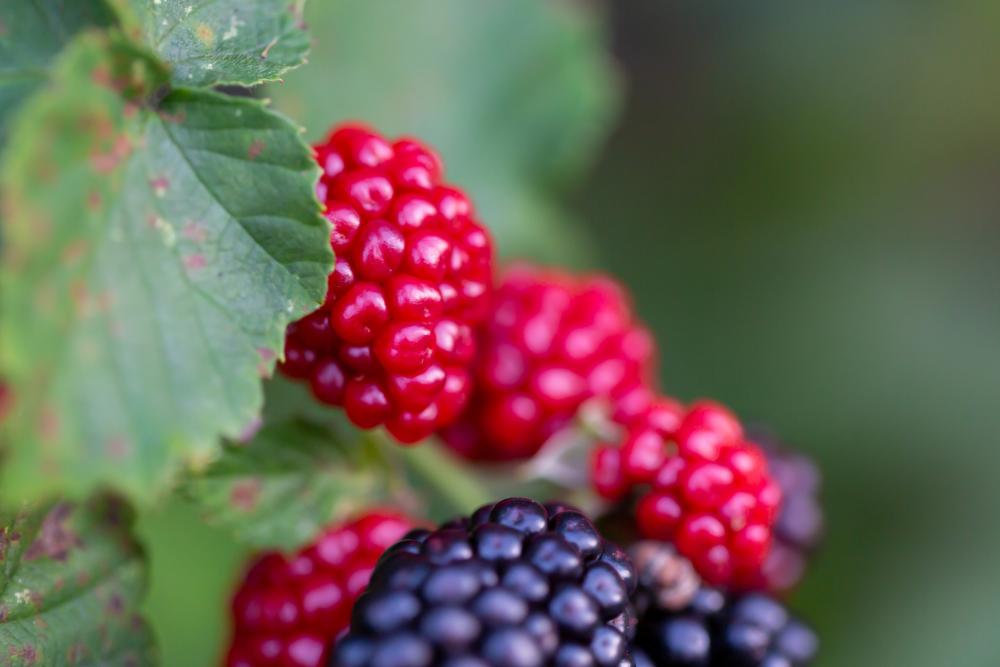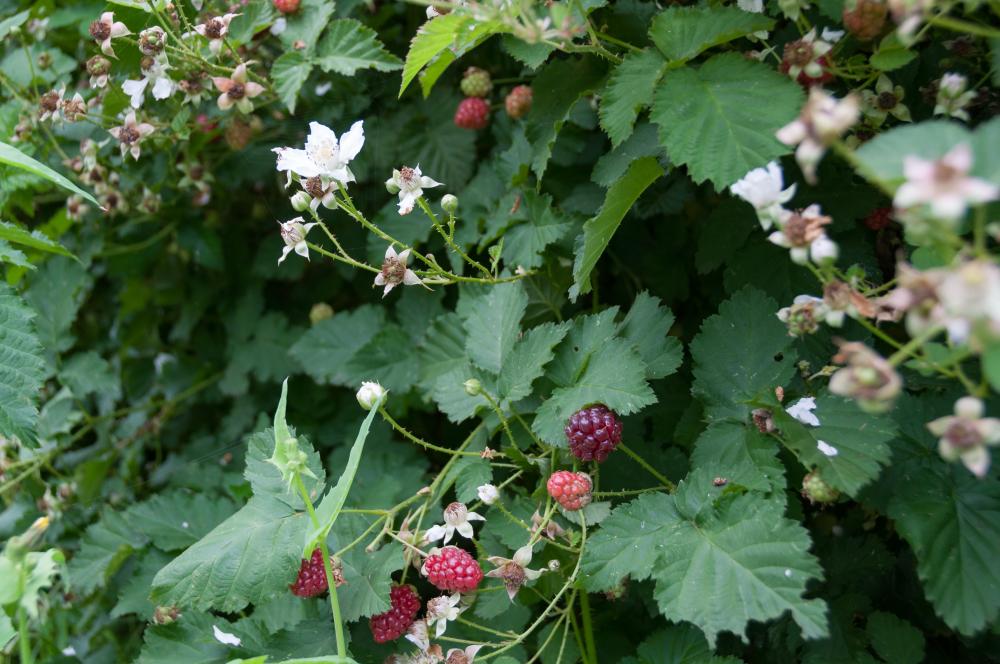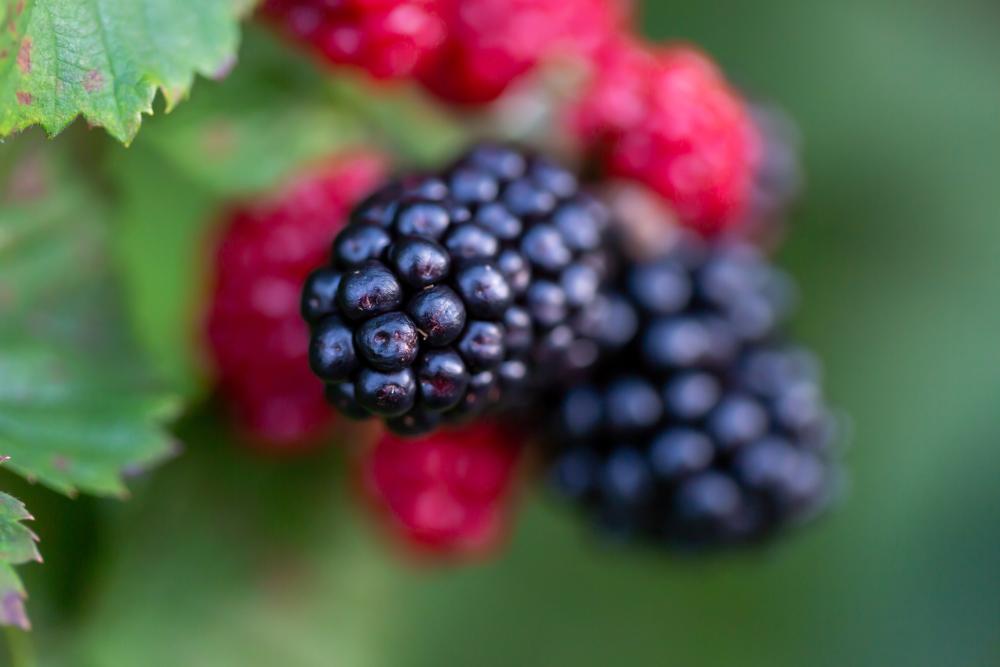Growing Boysenberry – How To Care For And Harvest Boysenberries
The boysenberry is the product of love, relentless work, and true friendship. That’s how this unique cultivar came into existence. One berry farmer in California (Rudolph Boysen) started this act of love to create a purplish-red berry that was different from all the berries out there. When Boysen quit and sold his farm, his friend Walter Knotts picked up the withering vines, nourished them back to life, and named the delicious berries after Boysen.
This Disney story (all true) is the reason we have boysenberry today. And if you have wondered about how to grow boysenberry before, read one to find out all about this trailing bramble and how to harvest the purplish berries.
Boysenberry At a Glance
A member of the Rubus genus, boysenberry (Rubus ursinus × Rubus idaeus) is a cultivar that was first obtained by crossbreeding raspberry, blackberry, dewberry, and loganberry. In the early twentieth century, when the berry first appeared, it failed to stir the appetite of Californians already spoilt for options when it comes to berries.
But a persistent berry lover (Knotts) started offering boysenberry in his berry stand, and eventually it caught on.
More of a bramble than an actual vine, the cultivar has woody stems and sharp thorns and grows well in zones 5 to 9. The plant grows horizontally compared to other brambles that grow erect. But it’s the berries that catch your eye and make your mouth water.
Boysenberry is a blackberry with hints of purple and red. The berry is round and often larger than an average blackberry and packed with flavors. You can use boysenberry as a good alternative for blackberry or any other berry. You can eat it fresh, put it in fruit salads, smoothies, fruit juices, and bake it to make delicious pies.
Boysenberry Benefits
Berries are famous for packing healthy nutrients that benefit the body and boost the immune system. Boysenberry, being a product of 4 different berries, has more nutrients and health benefits than the average berry.
- Antioxidants: Boysenberry is rich in antioxidants that boost the immune system and filter the free radicals swimming in the bloodstream that cause clots and damage the blood vessel walls.
- Vitamin C: While boysenberry has a lot of vitamins, it’s particularly known for its high contents of vitamin C. This essential vitamin boosts heart health and improves the immune system’s ability to fight the common cold and other related infections.
- Vitamin K: This is one of the vital vitamins for the health of brain cells. Vitamin K improves brain cell regeneration, and eating a handful of boysenberries every day improves brain functionality.
- Fiber: Since 70 percent of the immune system resides in our guts, it makes sense to keep our guts healthy. One way to do that is to feed the good gut bacteria with fiber. Boysenberry is packed with fibers that improve gut health and prevent many digestive problems.
- Low Calories: For all of these benefits, you won’t get many calories out of your daily diet of boysenberries. The berry has low-fat content, so all in all, it’s a healthy superfood to binge on.
Boysenberry Varieties
White itself a cultivar, boysenberry soon branched out. Once it became popular and crossed the state lines and after that went international, more cultivars grew out of the backyards of hobbyists as well as serious farmers. Here are some cultivars to consider.
- Boysenberry: This is the official name for the cultivar in the US. It can be either thorny or thornless. In most cases, you won’t know what you’ll get until the bramble is growing in your garden.
- Brulee: This cultivar comes from New Zealand. The plants are thornless, and the berries are sweeter than the original cultivar developed in the US. Still, it’s not easy to get your hands on this cultivar, and you’ll have to contact a farm in New Zealand to ship you a few plants.
- Tasman: Another New Zealand cultivar, but the thornless part is still a toss-up. It has a higher yield than other cultivars, but the berry is less sweet than the Brulee variety.
- Mapua: This New Zealand cultivar has strong flavors, and the berries have more red than purple shades.
How to Grow Boysenberry
Even though the boysenberry bushes tend to spread horizontally, you can train them to grow upwards. This saves you a lot of space and also makes caring for and maintaining the berries a lot easier. So before anything, you should prepare the garden and set up the trellis for support.
- Select an area that gets between 6 to 8 hours of sun every day. Partial shade in the afternoon might be good if you live in a hot zone where the summer sun could damage the ripening berries.
- Turn up the top 12 inches of the soil and mix in organic materials and aged manure to enrich the soil. Test the soil for drainage and amend it with sand or perlite as needed.
- Set up the trellis to provide support for the climbing bramble. You can also plant boysenberry next to a fence as long as it gets plenty of sun during the growing season.
- Once the soil has thawed by the end of the winter, you can plant the boysenberry cane in the soil. The bramble goes dormant in the winter, so the best time to plant it is before it comes out of dormancy.
- Dig a hole about 12 inches deep and the same in width to accommodate the root ball of the young boysenberry bush.
- Line the bottom of the hole with more aged manure. Mix the manure with the soil you dug out of the hole.
- Ease the sapling out of the pot or packaging it came in and examine the roots for any damage.
- Spread the roots to fill up the bottom of the hole and stand the plant upright before backfilling the hole with the soil and manure mixture. Pack it firmly to push out air pockets.
- Water the sapling immediately and keep the soil moist until you see new growth on the young bush.
- If you’re planting more than one boysenberry bramble, space the plants 5 feet apart and use one long trellis for every two bushes.
Boysenberry Care
Boysenberry care starts almost from the day you plant the saplings in your garden, and they send out branches every other way. Training those tender branches to climb the trellis or fence early on is the best guarantee that they will not crawl all over the ground and damage the berries. Winterizing the bramble is also important for its survival.
Watering
Boysenberry brambles are thirsty plants that need plenty of water during the growing season. On average, you’ll need to provide between 1 to 2 inches of water per week. You should factor in any rainfall and count it as part of this water quota. When you water the bramble during the hot days of the summer, you better do so in the early morning. Aim the water at the root of the bush and avoid getting the leaves or lower branches wet to avoid fungal infections. One good cue for you to water the bush is when the top 1 inch of the soil goes dry. After you harvest the berries and the leaves fall, cut down on the water.
Fertilizer
The boysenberry’s appetite for feeding is almost as great as its need for water. Before planting the sapling, add 2 inches of organic materials to every one foot of soil. That will give the plant a good start. From the time you notice early growth in the spring, start applying a balanced 10-10-10 fertilizer once every 2 weeks. Before the flower buds in the mid-spring, apply a phosphorus-high custom fertilizer to encourage an abundance of blooms. Switch back to the balanced fertilizer from the beginning of summer until 2 weeks before the berries are ripe. Side-dress with organic compost to provide any other minerals the soil might be deficient in.
Winterizing
How harsh your winter will determine the type of boysenberry winterizing you’ll have to perform. For mild winters devoid of excessive frosts or frigid temperatures, you’ll just need to cut back the bramble leaving the main branches, then cover the ground with 3 inches of mulch. Use straw or shredded bark to cover the ground and protect the roots from freezing over. Apply the mulch in the fall and keep it until the spring.
In severe winters packed with snow and other hazards, prune the bramble in the fall down to the main branches. Bring the branches down to the ground and lay them together. Cover the branches with 2 inches of soil, so they’re completely underground. Cover the soil with a thick layer of mulch and keep them there all winter. In the spring, lift them up and hoist them back on the trellis.
Pruning
When it comes to pruning boysenberry, you need to tell the difference between which branches to cut and which to leave on the bramble. Floricanes are old woody branches with dark or gray skin and should be removed. Primocanes are young branches, thin and green. You need to keep primocanes because they carry flowers and berries. After removing all floricanes, thin out the primocanes leaving only about 7 per bush. The best time to prune the bramble is in the fall after the leaves have fallen and before the first frost.
Pests and Diseases
Like many berries, boysenberry is plagued with a lot of pests. The most common ones are cutworms, thrips, aphids, cane borers, leafhoppers, whiteflies, and red berry mites. You can pick the large insects by hand and drown them in a bucket full of soapy water. As for the tiny pests, spray them with neem oil to eliminate them. Neem oil is a natural pesticide that is extracted from plants and has no negative impact either on the environment or the safety of the berries.
As for diseases, boysenberries are prone to cane and leaf rust, Anthracnose, crown gall, Derryberry disease, and orange rust, among others.
Harvesting Boysenberry
Harvesting boysenberry is a rather lengthy process. The berries take all summer to ripen, and you can start harvesting them in July. But not all berries become ripe at the same time, and you’ll be harvesting a patch at a time well into August. The ripe berries are rather delicate, and you’ll need to use your hands and be gentle not to squash them while picking them. Also, watch out for the thorns and wear protective eyeglasses and thick gloves.
On their ripening journey, the boysenberries go through all the colors of their parents. The berries will turn from green to pink to red, then deep red, purple, and finally black. You’ll need to harvest them when they’re dark purple because that’s when they’re the sweetest.
Store the berries in the fridge for up to a week. They taste better when eaten fresh. If you can’t consume them all, make berry jam to preserve them.



Thank you so much for this article. I just moved away from California and my favorite berry and I can’t wait to bring a little of my childhood to my new home. Can’t wait to plant!